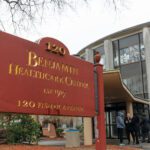MONTPELIER, Vt. — Lily-white Vermont — which has a higher percentage of white people than any U.S. state — has become more racially diverse during the last 10 years, with huge increases in the number of blacks, Asians and people who self-identified as being of more than one race, according to new census data released last week.
Between 2000 and 2010:
• The number of black people living in Vermont jumped 104.9 percent, from 3,063 to 6,277.
• The number of Vermonters identifying themselves as Asian rose 52 percent, from 5,217 to 7,947.
• The number of people in Vermont who consider themselves Hispanic or Latino jumped by 67.3 percent, from 5,504 to 9,208.
• The number identifying themselves as being of two or more races climbed by 46.6 percent, from 7,335 in 2000 to 10,753 last year.
Those categories still represent tiny fractions of the state’s 625,741 population, but the gains reflect slow but gradual change in Vermont’s racial makeup. According to previous U.S. Census Bureau estimates on race, 96 percent of Vermont residents are white alone. New data on that category will be released later this year.
“Vermont’s getting more diverse, it’s as simple as that,” said Will Sawyer, manager of the state data center at the University of Vermont’s Center for Rural Studies. “We’re seeing these leaps and bounds within the racial groupings themselves, but they still represent a very small slice of the population. But you can’t deny that things are changing and getting more diverse.”
The data on population, demographics and race was part of a Census Bureau release showing changes in Vermont’s people over the 10-year span. Census officials say the updated population figures can be used to realign state legislative and congressional districts in Vermont.
Two of the state’s biggest cities posted notable population gains. South Burlington (population 17.904) had a 13.2 percent increase, and Burlington (population 42,417) was up 9.1 percent since the 2000 Census. Rounding out Vermont’s most populous places: Essex (population 19,587), Colchester (17,067) and Rutland (16,495.)
South Burlington, which had been Vermont’s fifth-biggest municipality in 2000, climbed to third on the list, replacing Rutland.
Chittenden County, which includes Burlington, remains Vermont’s most populous, with 156,545, more than double that of any of the other 13 counties.
Associated Press






